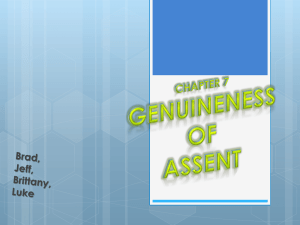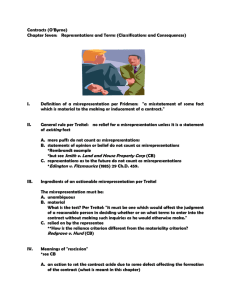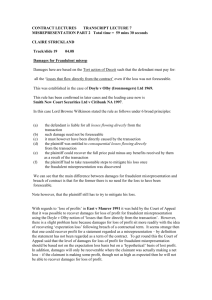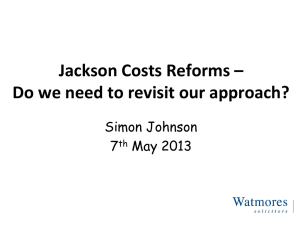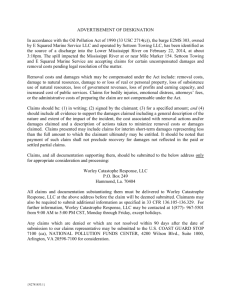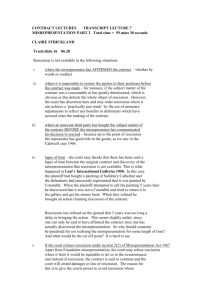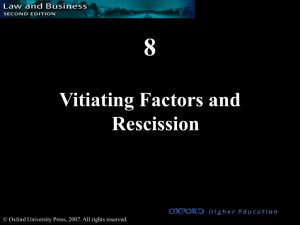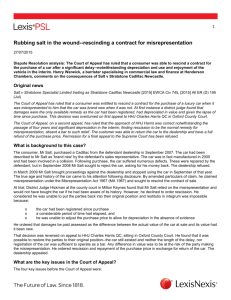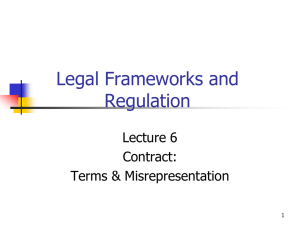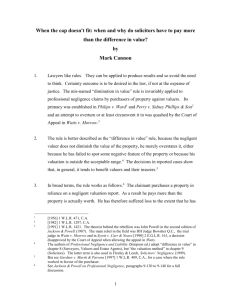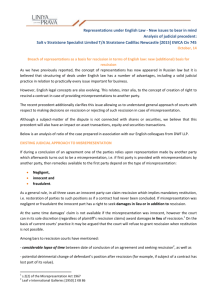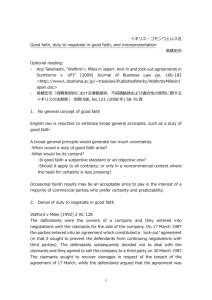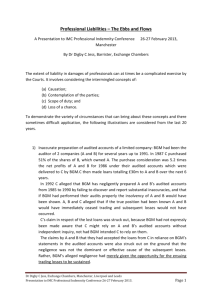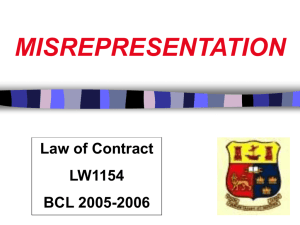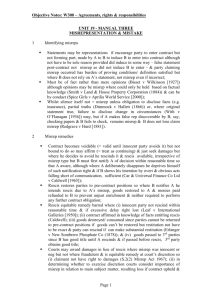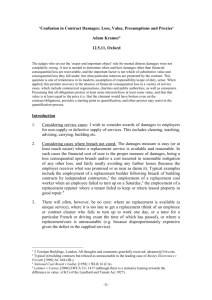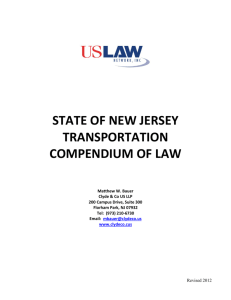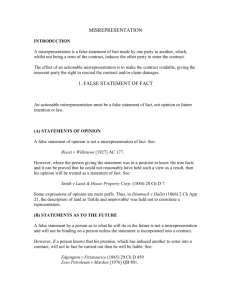Contract Law Misrepresentation
advertisement
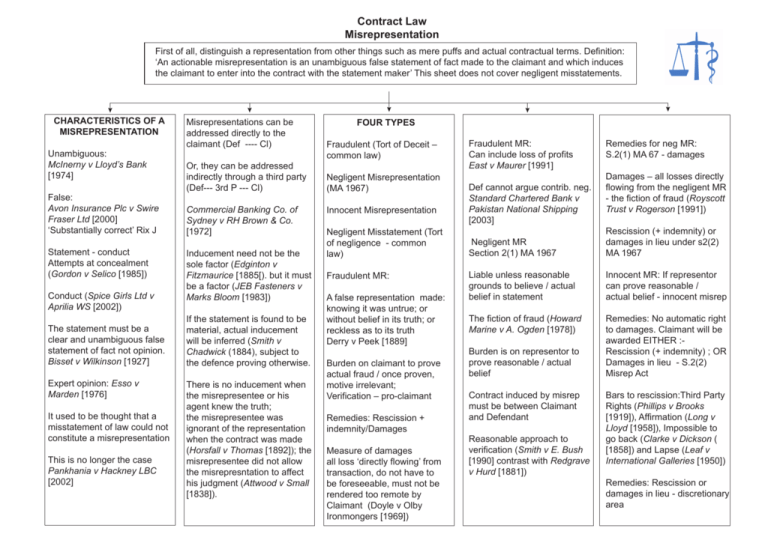
Contract Law Misrepresentation First of all, distinguish a representation from other things such as mere puffs and actual contractual terms. Definition: ‘An actionable misrepresentation is an unambiguous false statement of fact made to the claimant and which induces the claimant to enter into the contract with the statement maker’ This sheet does not cover negligent misstatements. CHARACTERISTICS OF A MISREPRESENTATION Unambiguous: McInerny v Lloyd’s Bank [1974] False: Avon Insurance Plc v Swire Fraser Ltd [2000] ‘Substantially correct’ Rix J Statement - conduct Attempts at concealment (Gordon v Selico [1985]) Conduct (Spice Girls Ltd v Aprilia WS [2002]) The statement must be a clear and unambiguous false statement of fact not opinion. Bisset v Wilkinson [1927] Expert opinion: Esso v Marden [1976] It used to be thought that a misstatement of law could not constitute a misrepresentation This is no longer the case Pankhania v Hackney LBC [2002] Misrepresentations can be addressed directly to the claimant (Def ---- Cl) Or, they can be addressed indirectly through a third party (Def--- 3rd P --- Cl) Commercial Banking Co. of Sydney v RH Brown & Co. [1972] Inducement need not be the sole factor (Edginton v Fitzmaurice [1885[). but it must be a factor (JEB Fasteners v Marks Bloom [1983]) If the statement is found to be material, actual inducement will be inferred (Smith v Chadwick (1884), subject to the defence proving otherwise. There is no inducement when the misrepresentee or his agent knew the truth; the misrepresentee was ignorant of the representation when the contract was made (Horsfall v Thomas [1892]); the misrepresentee did not allow the misrepresntation to affect his judgment (Attwood v Small [1838]). FOUR TYPES Fraudulent (Tort of Deceit – common law) Negligent Misrepresentation (MA 1967) Innocent Misrepresentation Negligent Misstatement (Tort of negligence - common law) Fraudulent MR: A false representation made: knowing it was untrue; or without belief in its truth; or reckless as to its truth Derry v Peek [1889] Burden on claimant to prove actual fraud / once proven, motive irrelevant; Verification – pro-claimant Remedies: Rescission + indemnity/Damages Measure of damages all loss ‘directly flowing’ from transaction, do not have to be foreseeable, must not be rendered too remote by Claimant (Doyle v Olby Ironmongers [1969]) Fraudulent MR: Can include loss of profits East v Maurer [1991] Def cannot argue contrib. neg. Standard Chartered Bank v Pakistan National Shipping [2003] Remedies for neg MR: S.2(1) MA 67 - damages Damages – all losses directly flowing from the negligent MR - the fiction of fraud (Royscott Trust v Rogerson [1991]) Negligent MR Section 2(1) MA 1967 Rescission (+ indemnity) or damages in lieu under s2(2) MA 1967 Liable unless reasonable grounds to believe / actual belief in statement Innocent MR: If representor can prove reasonable / actual belief - innocent misrep The fiction of fraud (Howard Marine v A. Ogden [1978]) Remedies: No automatic right to damages. Claimant will be awarded EITHER :Rescission (+ indemnity) ; OR Damages in lieu - S.2(2) Misrep Act Burden is on representor to prove reasonable / actual belief Contract induced by misrep must be between Claimant and Defendant Reasonable approach to verification (Smith v E. Bush [1990] contrast with Redgrave v Hurd [1881]) Bars to rescission:Third Party Rights (Phillips v Brooks [1919]), Affirmation (Long v Lloyd [1958]), Impossible to go back (Clarke v Dickson ( [1858]) and Lapse (Leaf v International Galleries [1950]) Remedies: Rescission or damages in lieu - discretionary area
